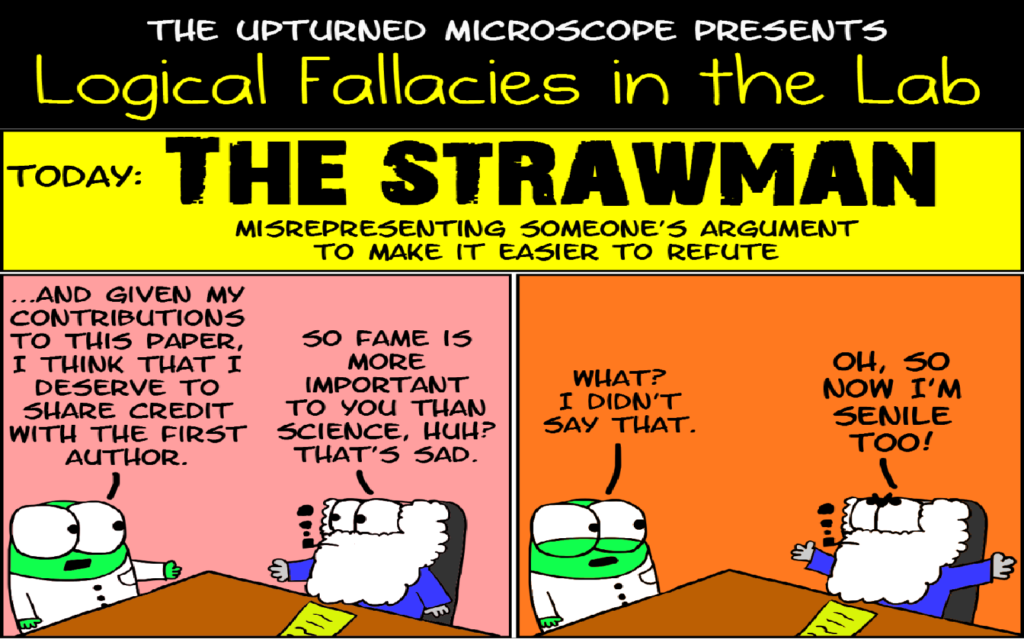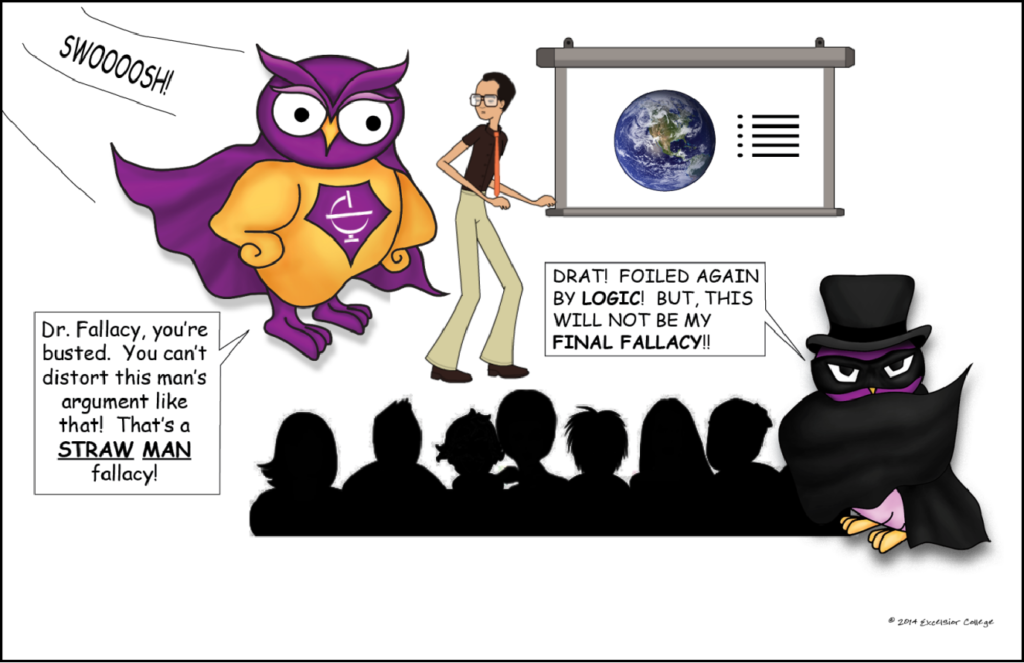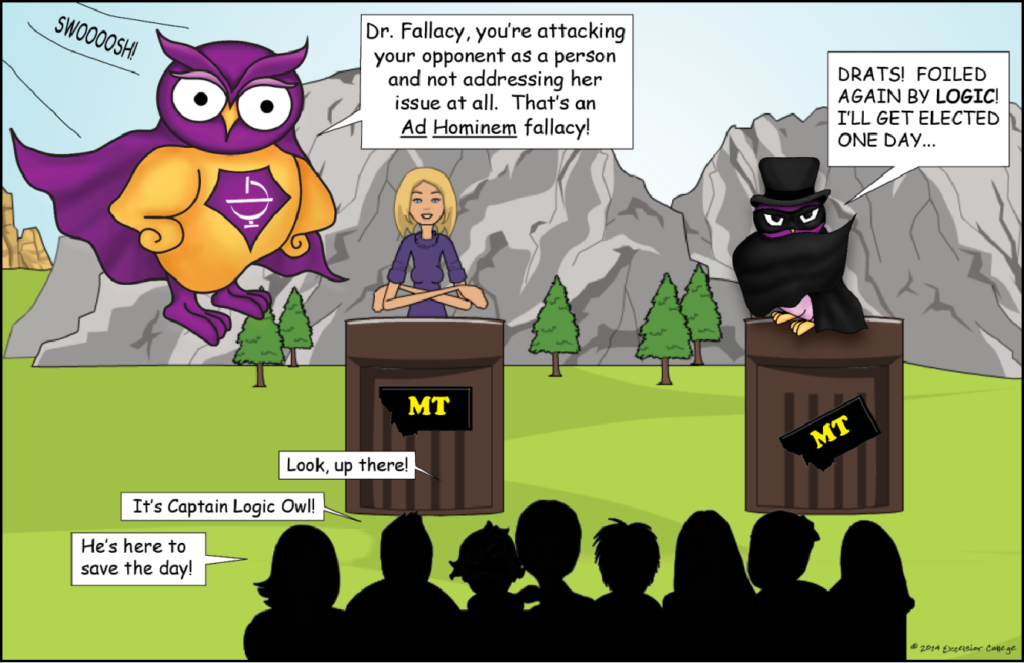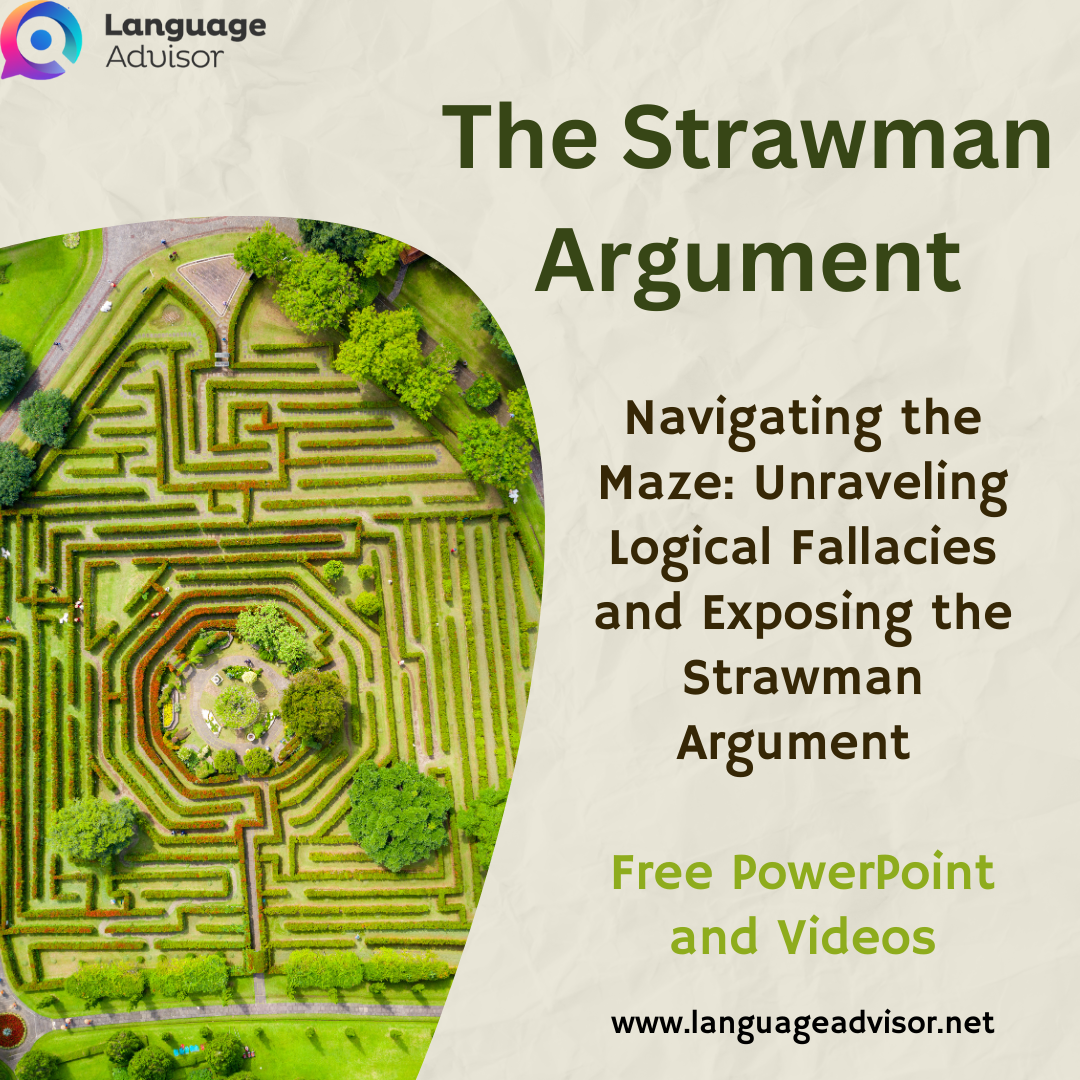Navigating the Maze: Unraveling Logical Fallacies and Exposing the Strawman Argument. Free PowerPoint and Videos
Navigating the Maze: Unraveling Logical Fallacies and Exposing the Strawman Argument

Navigating the Maze: Unraveling Logical Fallacies and Exposing the Strawman Argument
What are logical fallacies?
Logical fallacies are like landmines; easy to overlook until you find them the hard way.
One of the most important components of learning in college is academic discourse, which requires argumentation and debate. Argumentation and debate inevitably lend themselves to flawed reasoning and rhetorical errors. Many of these errors are considered logical fallacies. Logical fallacies are commonplace in the classroom, in formal televised debates, and perhaps most rampantly, on any number of internet forums.
But what is a logical fallacy? And just as important, how can you avoid making logical fallacies yourself? Whether you’re in college, or preparing to go to college; whether you’re on campus or in an online bachelor’s degree program, it pays to know your logical fallacies. This article lays out some of the most common logical fallacies you might encounter, and that you should be aware of in your own discourse and debate.
A logical fallacy is an error in reasoning common enough to warrant a fancy name. Knowing how to spot and identify fallacies is a priceless skill. It can save you time, money, and personal dignity. There are two major categories of logical fallacies, which in turn break down into a wide range of types of fallacies, each with their own unique ways of trying to trick you into agreement.

A Formal Fallacy
A breakdown in how you say something. The ideas are somehow sequenced incorrectly. Their form is wrong, rendering the argument as noise and nonsense.
An Informal Fallacy
Denotes an error in what you are saying, that is, the content of your argument. The ideas might be arranged correctly, but something you said isn’t quite right. The content is wrong or off-kilter.

Strawman Argument


It’s much easier to defeat your opponent’s argument when it’s made of straw. The Strawman argument is aptly named after a harmless, lifeless, scarecrow. In the strawman argument, someone attacks a position the opponent doesn’t really hold. Instead of contending with the actual argument, he or she attacks the equivalent of a lifeless bundle of straw, an easily defeated effigy, which the opponent never intended upon defending anyway.

The strawman argument is a cheap and easy way to make one’s position look stronger than it is. Using this fallacy, opposing views are characterized as “non-starters,” lifeless, truthless, and wholly unreliable. By comparison, one’s own position will look better for it. You can imagine how strawman arguments and ad hominem fallacies can occur together, demonizing opponents and discrediting their views.
With the strawman argument, someone attacks a position the opponent doesn’t really hold.
This fallacy can be unethical if it’s done on purpose, deliberately mischaracterizing the opponent’s position for the sake of deceiving others. But often the strawman argument is accidental, because the offender doesn’t realize the are oversimplifying a nuanced position, or misrepresenting a narrow, cautious claim as if it were broad and foolhardy.
Which fallacy is this an example of?

It’s a straw-man fallacy!

Which fallacy is this an example of?

It’s Ad Hominem!



Navigating the Maze: Unraveling Logical Fallacies and Exposing the Strawman Argument
DOWNLOAD THE POWER POINT FOR FREE
Logical Fallacies

Also check out these free resources on Critical Thinking and Logical Fallacies















